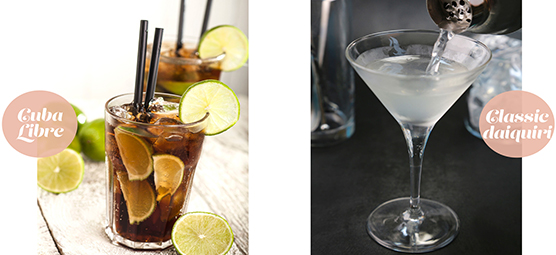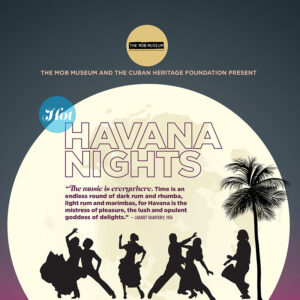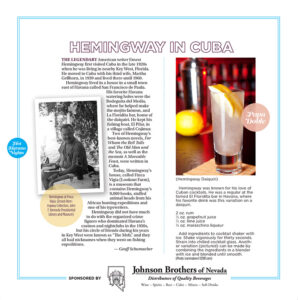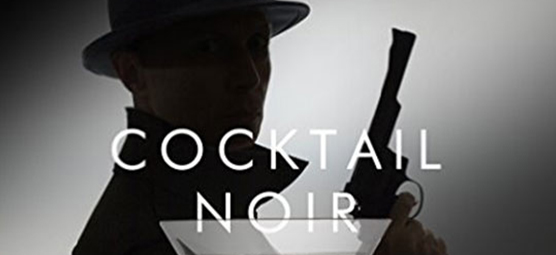Mojitos, daiquiris and beyond
A survey of Cuba’s classic cocktail scene

 In the early 20th century Cuban bartenders, known as cantineros, created a unique cocktail culture that hit its zenith in the pre-Castro era of celebrities, Mob-run hotels, casinos, and nightclubs. A recent article in Punch magazine, by Francois Monti, argued for a deeper appreciation of Cuban cocktail history, “As it applied to drinks, Cuban cantineros modified American classics to suit their clients’ palates, resulting in a canon of riffs that are uniquely Cuban.”
In the early 20th century Cuban bartenders, known as cantineros, created a unique cocktail culture that hit its zenith in the pre-Castro era of celebrities, Mob-run hotels, casinos, and nightclubs. A recent article in Punch magazine, by Francois Monti, argued for a deeper appreciation of Cuban cocktail history, “As it applied to drinks, Cuban cantineros modified American classics to suit their clients’ palates, resulting in a canon of riffs that are uniquely Cuban.”
The Cuban cocktail scene got its first big jolt of business, and expatriate American bartenders, during Prohibition. American bartenders flocked to the island to ply their trade, as did American tourists. It led to the formation of the Club de Cantineros in 1924. The club published a guide to Cuban drinks in 1930. The guide showcased dozens of unique Cuban cocktails. While many drinks featured gin, whiskey, and vermouth, half of them contained rum.
When people think of Cuba and cocktails, they often think of rum. The island nation and its most popular spirit are inexorably intertwined. Two of the best-known rum brands, Bacardi and Havana Club, were started in Cuba. And from the daiquiri to the mojito, rum was the basis for many of the island’s best-known and best-loved libations.
Rum also became Cuba’s biggest export during Prohibition, popularizing the moniker “rum runner” to describe liquor smugglers. Rum, and its main ingredients molasses and cane sugar, made its way from the island nation to the United States via ports in the South, especially the port of Tampa.
During this time, new venues opened in Cuba to satisfy a burgeoning tourist population. One of the more famous bars was Sloppy Joe’s, a haunt of the writer Ernest Hemingway. The bar name likely brings to mind the namesake in Key West, but the original was in Cuba (and recently reopened after 50 years). There also was the Vedado Cocktail Lounge, the tagline of which was “where strangers become friends.”
By the 1940s and ’50s Mob-run resorts, such as the Hotel Capri, Sans Souci and Hotel Nacional de Cuba, were centers of not only nightlife but cocktail culture. There was even a Trader Vic’s, a Polynesian themed bar in the Habana Hilton. There was the classic and still-standing El Floridita, the “Cradle of the Frozen Daiquiri.” The frozen daiquiri was made popular there when bartender Constantine Ribalagua blended shaved ice into the cocktail. Another pre-Castro-era bar that is still a tourist draw is La Bodeguita del Medio, which claims to be the birthplace of the mojito.
With relations thawing between the United States and Cuba and the recent announcement of direct commercial flights to the island from the U.S. for the first time in more than 50 years, it might be time for renewed interest in the vast array of Cuban cocktails and some of the remaining classic watering holes.
Scott M. Deitche is the author of six books on organized crime, including a book on cocktails, “Cocktail Noir.” He has written dozens of articles on organized crime for local and national magazines and newspapers. He has been featured on the Discovery Channel, History Channel, A&E, C-SPAN and both national and local news and radio shows.
Feedback or questions? Email blog@themobmuseum.org







